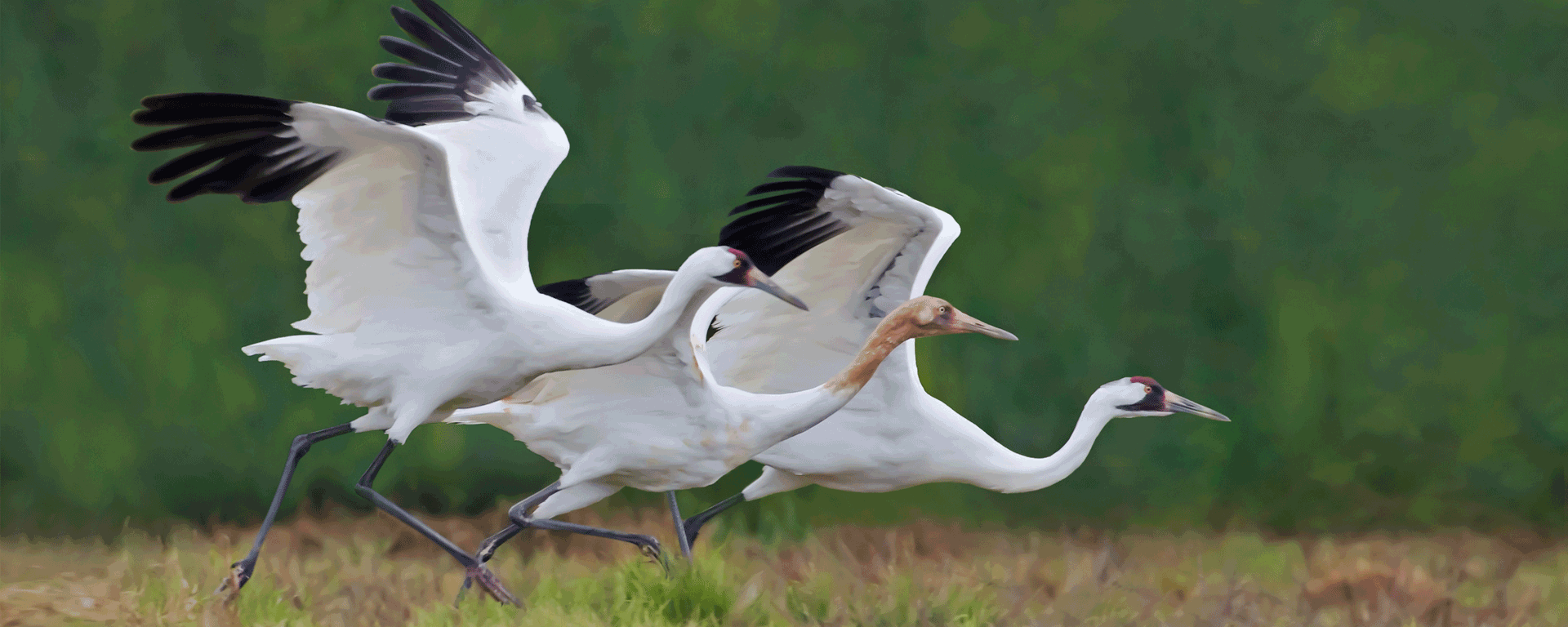
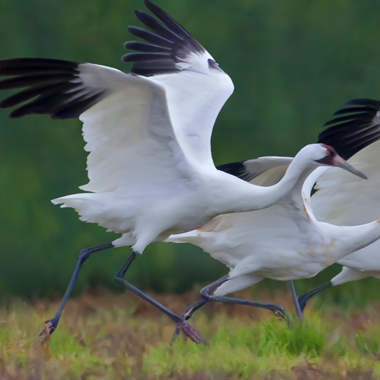
feature
wild files: whooping cranes of louisiana
situation
2011 • Louisiana
In the early 20th century, North America’s whooping crane population experienced a devastating decline driven by several factors:
- Prairie and marsh habitats converted to farmland
- Unregulated hunting

In 2011, the Louisiana Department of Wildlife & Fisheries (LDWF) established the whooping crane reintroduction program with support from two key partners:
- U.S. Fish & Wildlife Service
- Chevron
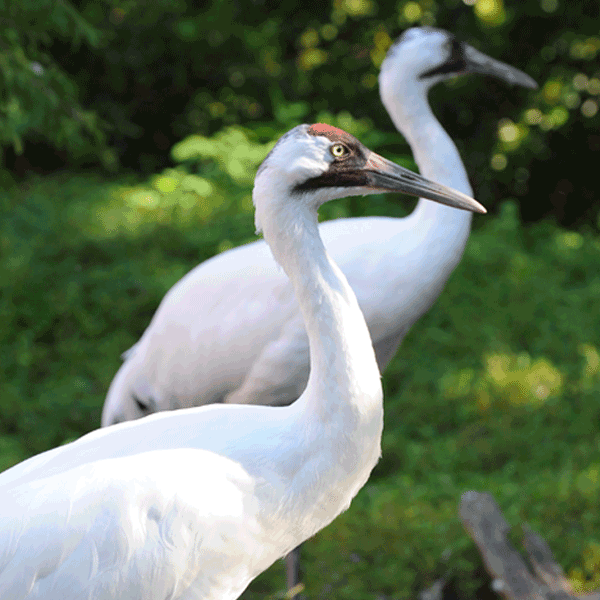
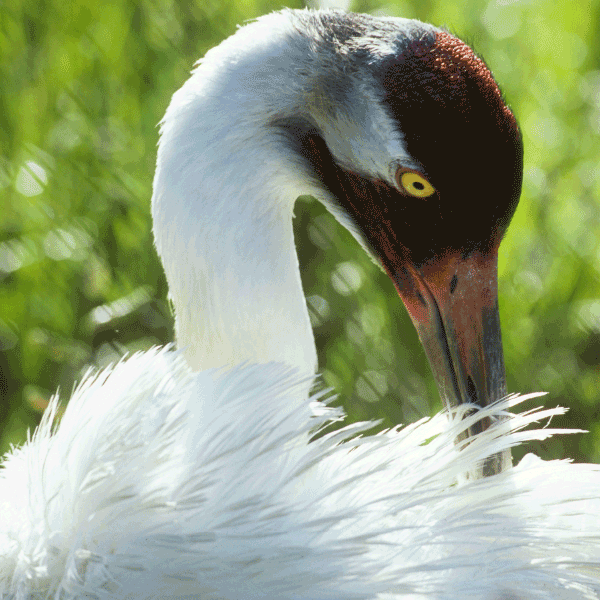
actions taken
LDWF started a new wild population of cranes in Louisiana by releasing a “cohort” of 10 juvenile cranes.
"Cohort" is a term that refers to several young cranes assembled without parents to socialize together so they will thrive as a group.
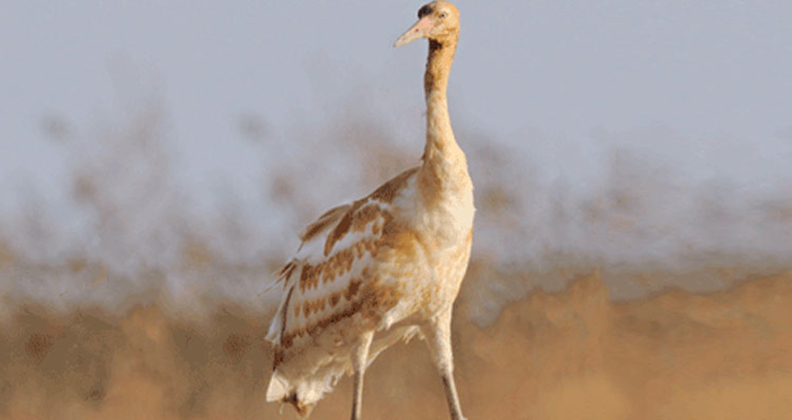
Juvenile markings: White with patches of cinnamon brown
They continued to introduce a new cohort of juvenile cranes each year with the help of other partners.
Satellite transmitter equipment and associated communications costs for tracking:
- The cranes’ movement
- Habitat selections
- Adaptive behavior adjusting to life in the wild
Public outreach campaign (billboards, TV and radio) designed to alert the public about:
- The species
- How to observe them from a distance
- How to report any disturbances to the bird
Lesson plans, classroom tools, and educational workshops for Louisiana middle and high school teachers about endangered species and LDWF’s conservation programs.
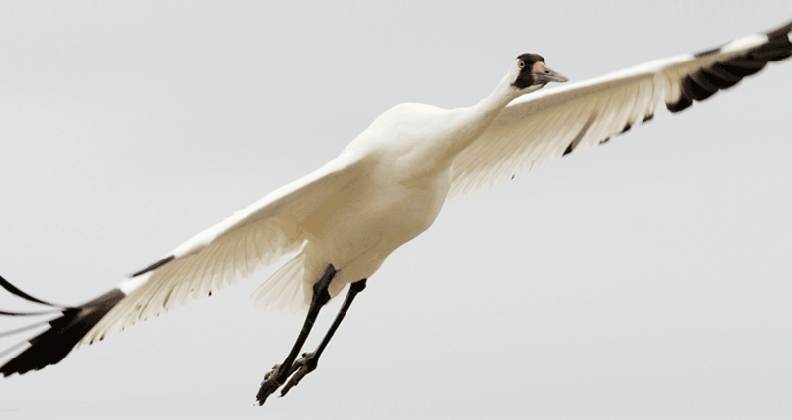
Adult whooping cranes are the tallest bird native to North America. Adults are easily identified by their black-tipped wings, red head and black facial markings.
wingspan
7-8
feet
lifespan in the wild
22-24
years
weight
11-17
pounds
height
up to 5
feet
whooping cranes are omnivorous
summer diet includes:
frogs
fish
rodents
small birds
berries
summer diet includes:
blue crabs
clams
April 2016 brought the first verified hatching of a whooping crane chick in the state since 1939.
In 2017, Audubon Nature Institute began to provide a significantly increased number of crane chicks raised at their rearing facilities to supplement both the migratory and non-migratory whooping crane populations in Louisiana.
As of 2018, LDWF has introduced 125 juvenile whooping cranes to the Louisiana ecosystem, and seven wild-hatched chicks have fledged successfully.
our actions were consistent with our goal to
conserve biodiversity:
we strive to avoid or reduce the potential for significant impacts on sensitive species, habitats and ecosystems
Wild Files is a series on Chevron.com that spans the world to cover interesting examples of how we deliver on our commitment to environmental stewardship.
Published: October 2018